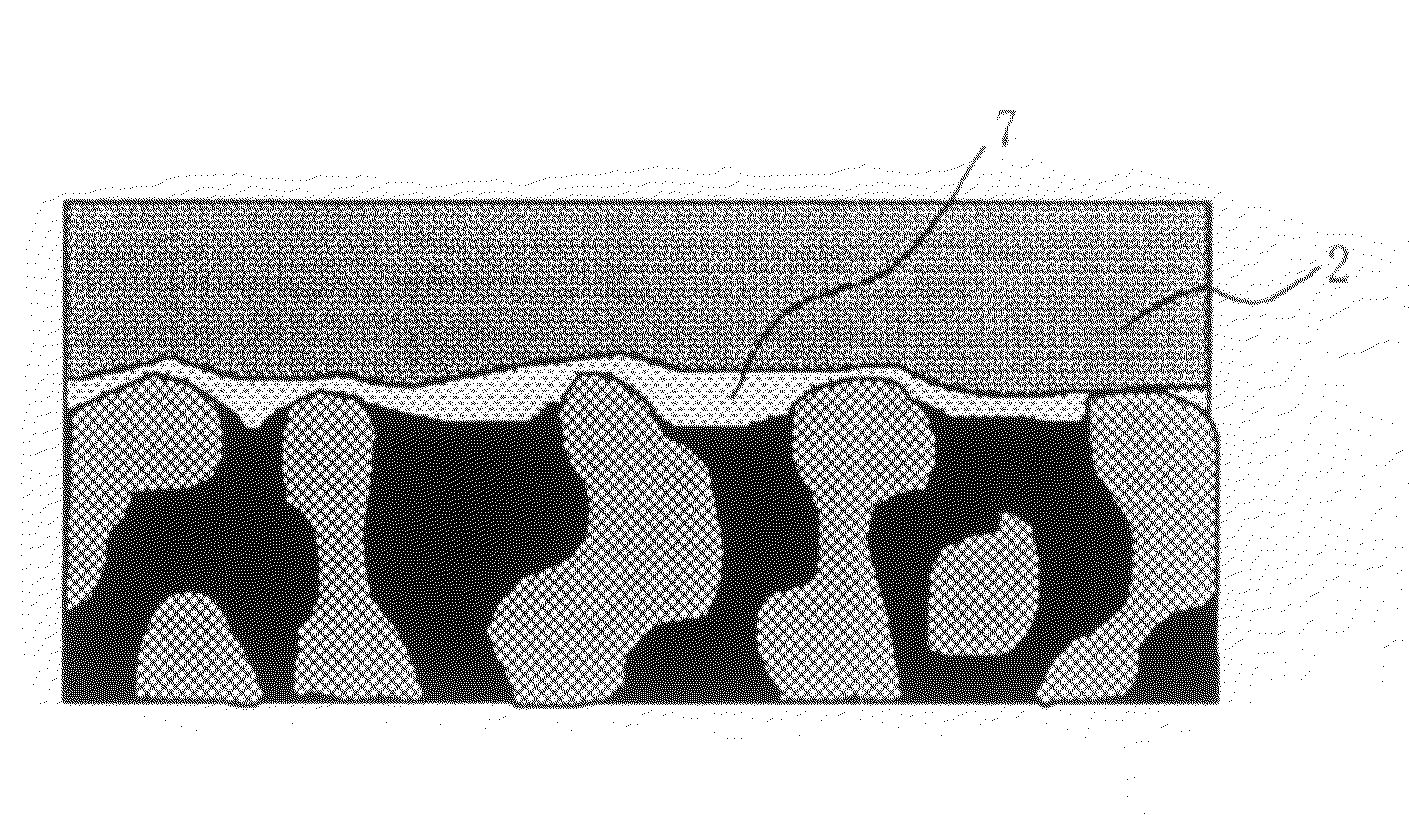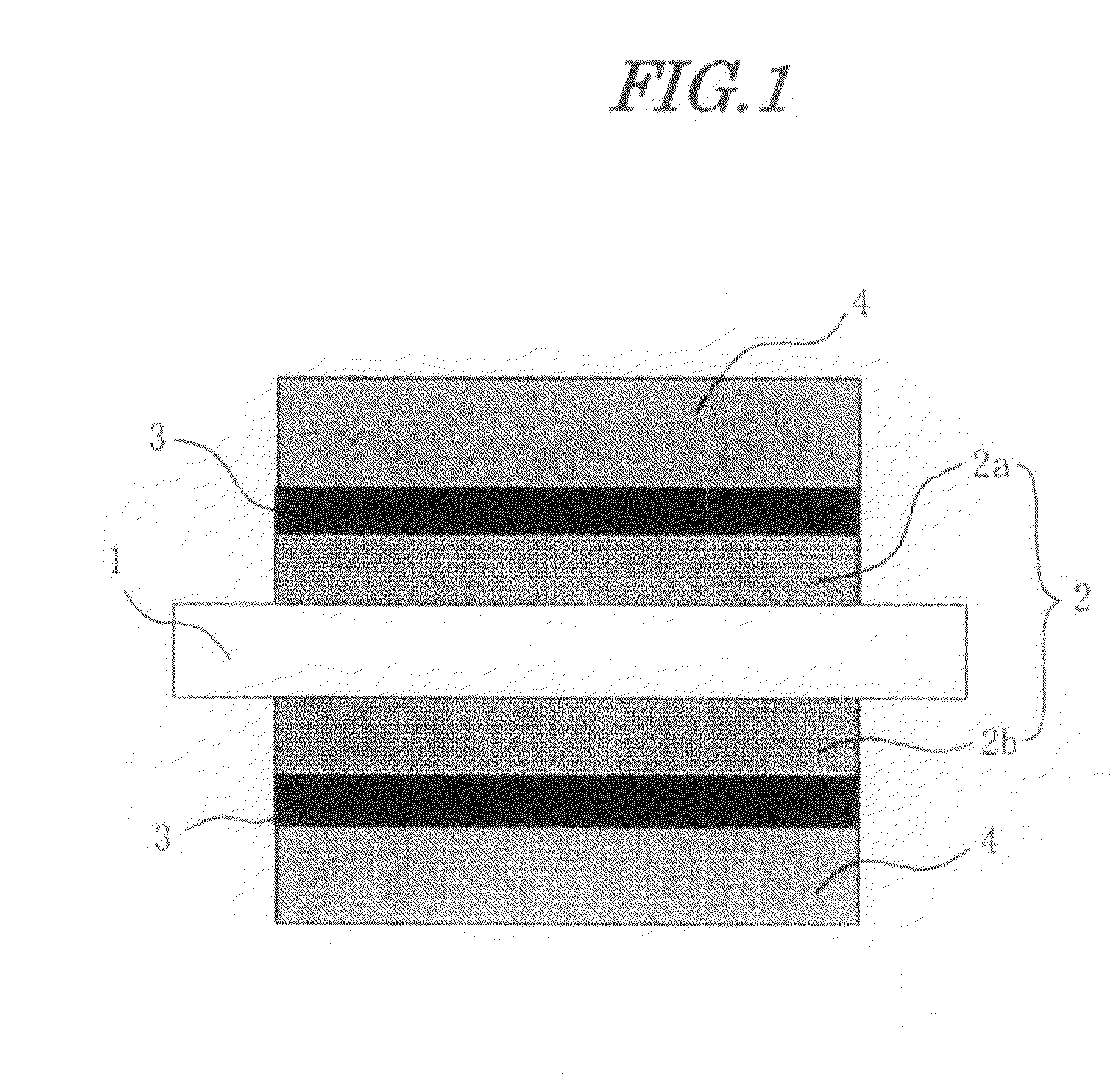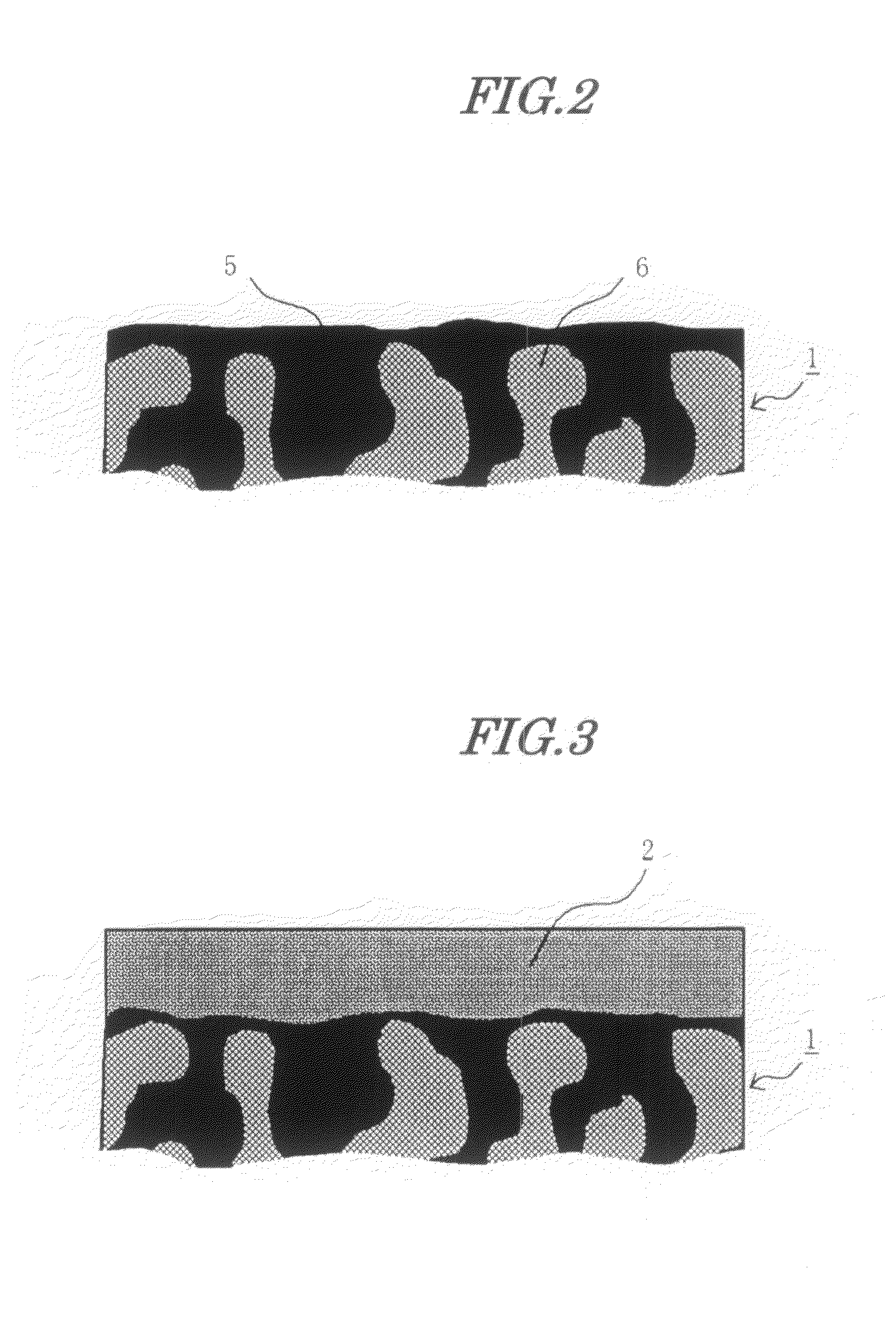Membrane electrode assembly and direct liquid fuel cell
a liquid fuel cell and membrane electrode technology, applied in the field of membrane electrode assembly, can solve the problems of fuel concentration cannot be increased, electrode and membrane peeling easily, energy loss, etc., and achieve the effects of improving initial operation speed, long lifespan, and less permeation of methanol
- Summary
- Abstract
- Description
- Claims
- Application Information
AI Technical Summary
Benefits of technology
Problems solved by technology
Method used
Image
Examples
production example 1
Electrode Production Example 1
[0162]60 g of a commercial catalyst having platinum and ruthenium supported on carbon black (product name TEC61E54, manufactured by Tanaka Kikinzoku Kogyo K.K.), 20 g on a solids basis of a 5 weight % solution of a fluorine-based polymer electrolyte (product name Nafion, manufactured by DuPont) as an electrolyte, and 5 g on a solids basis of a polytetrafluoroethylene dispersion were stirred and mixed in a ball mill to give an anode catalyst ink.
[0163]This was printed on to one side of a commercial carbon paper (product name TGP-H-060, manufactured by Toray Industries, Inc.), one side of which had been coated in advance with a dispersion of carbon black in alcohol and dried so as to form a diffusion layer, and dried to give an anode electrode.
[0164]Similarly, a cathode catalyst ink was prepared using the same composition as for the anode side except that a commercial catalyst having platinum supported on carbon black (TEC10E50E, manufactured by Tanaka Ki...
example 1
Example of use of a Layer of Nafion on its own on Catalyst Layer
[0167]A PTFE sheet was coated with a 5 weight % solution of a commercial fluorine-based electrolyte polymer (product name Nafion, manufactured by DuPont), followed by drying to give a thin membrane.
[0168]The catalyst layers of a pair of the electrodes produced in Electrode Production Example 1 were superimposed on the above sheet, they were subjected to hot-pressing at 120° C., the PTFE sheet was removed to thus transfer the fluorine-based polymer electrolyte coating onto the catalyst layer, and they were finally heated under a nitrogen atmosphere at 180° C. for 1 hour.
[0169]The high electrolyte content layer on the catalyst layer in this case had a polymer electrolyte proportion of 100 vol %. The hydrocarbon-based electrolyte membrane produced in Electrolyte Membrane Production Example 1 was sandwiched by this pair of electrodes and hot-pressed at 120° C., thus giving an MEA.
[0170]A direct methanol fuel cell was formed...
example 2
Example of Printing a Mixture of Nafion and Carbon on Catalyst Layer
[0172]60 g of a 5 weight % solution of a commercial fluorine-based electrolyte polymer (product name Nafion, manufactured by DuPont) and 1 g of carbon black (Ketjen Black EC, manufactured by Ketjen Black International) were mixed, and solvent was evaporated while stirring until a paste suitable for printing was obtained. This was printed on the catalyst layer of a pair of the electrodes produced in Electrode Production Example 1 by screen printing, and they were finally heated under a nitrogen atmosphere at 180° C. for 1 hour.
[0173]The high electrolyte content layer on the catalyst layer in this case had a polymer electrolyte proportion of about 75 vol %. The hydrocarbon-based electrolyte membrane produced in Electrolyte Membrane Production Example 1 was sandwiched by this pair of electrodes, an MEA was obtained in the same manner as in Example 1, and a direct methanol fuel cell was formed therefrom, and operated re...
PUM
| Property | Measurement | Unit |
|---|---|---|
| temperature | aaaaa | aaaaa |
| softening temperature | aaaaa | aaaaa |
| softening temperature | aaaaa | aaaaa |
Abstract
Description
Claims
Application Information
 Login to View More
Login to View More - R&D
- Intellectual Property
- Life Sciences
- Materials
- Tech Scout
- Unparalleled Data Quality
- Higher Quality Content
- 60% Fewer Hallucinations
Browse by: Latest US Patents, China's latest patents, Technical Efficacy Thesaurus, Application Domain, Technology Topic, Popular Technical Reports.
© 2025 PatSnap. All rights reserved.Legal|Privacy policy|Modern Slavery Act Transparency Statement|Sitemap|About US| Contact US: help@patsnap.com



